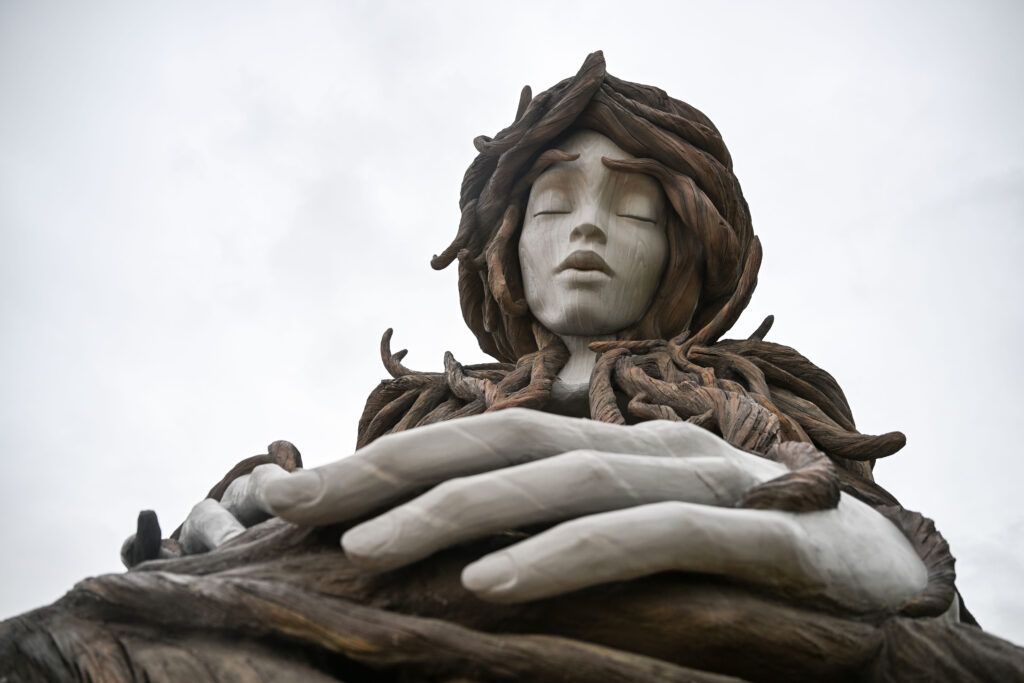The interdependence at the heart of American independence | Vince Bzdek
Way up high in one of the gables of the Jefferson Memorial, a pediment sculpture depicts the renowned Committee of Five.
The sculpture is a reminder that the Declaration of Independence was not the work of one man, Thomas Jefferson, but rather a close collaboration of five illustrious Founders. That’s right, the writing of our most significant founding document on independence required an exercise in interdependence.
“The Committee of Five were the most illustrious group of men ever assembled in America. They were all men of genius, and they were all dedicated to the cause of liberty,” wrote Founding Father Benjamin Rush.
The Committee of Five included John Adams of Massachusetts, who later became the second president of the United States; Jefferson of Virginia, who later became the third president of the United States; Benjamin Franklin of Pennsylvania, the renowned intellectual and inventor; Robert Livingston of New York, who later served as the first U.S. secretary of foreign affairs; and Roger Sherman of Connecticut, the only man to sign all four founding documents of the United States: the Continental Association, the Declaration of Independence, the Articles of Confederation and the U.S. Constitution.
The instant they were given the assignment to come up with a document marking the formal separation of America from Britain, they became marked men in Britain.
They were also marked by rivalry, division and personal agendas, as argumentative as any politicians are today.
One of the five, Livingston, who become known as “The Reluctant Patriot,” actually abstained from signing the document they created, believing it premature to sever ties with the British Crown.
Adams was the one who asked Jefferson to write the original draft, but he stewed for years about the decision.
While he recognized Jefferson’s “particular felicity of expression,” he nonetheless harbored a resentment toward his rival over the larger share of credit Jefferson received for the Revolution. (To this day, you won’t find a statue of John Adams anywhere in Washington.)
Adams’ irk would metastasize into a full-blown falling out later in their lives.
Adams, a powerful orator and the true rocket fuel behind the drive for independence, certainly could have written the Declaration himself. But he admitted to Jefferson that he had a reputation for being “obnoxious, suspected, and unpopular. You are very much otherwise,” so Adams decided the Declaration might be an easier sell to Congress if Jefferson were its author.
A creative clash erupted after Jefferson penned the first draft over 17 days, with Jefferson’s lofty language and ideals slamming head-on into former newspaperman Franklin’s preference for brevity and wit.
“Jefferson, the Virginian, brought a certain ornate eloquence to his writing, a penchant for the grand and the elegant, the layered and the nuanced,” according to Tyler Muse of the History Oasis.
“Enter Benjamin Franklin, the Pennsylvanian polymath, with a style as sharp and clear as the lenses of his bifocals.
“Franklin, the seasoned editor and celebrated author, was known for his straightforward, no-nonsense approach to the written word. Wit was his weapon, brevity his ally. As such, he took Jefferson’s grand draft and, with a discerning eye and a redactive hand, began to shape it.”
In one instance, Franklin changed Jefferson’s original phrase “We hold these truths to be sacred and undeniable” to the more direct “We hold these truths to be self-evident,” making Jefferson’s idea less religious and more self-justifying and universal. The phrase was originally inspired by John Locke’s defense of private property as a natural right, “life, liberty, and estate.”
One of the most contentious issues during the creation of the Declaration was a passage condemning British slavery in Jefferson’s original draft. Much to Jefferson’s chagrin, the passage was removed on the floor of Congress in order to avoid offending slaveholders.
Another passage that was seen as offensive to the British people was also removed by the Committee of the Whole, which gave the Declaration a final reading on July 3, 1776.
The text’s formal adoption was deferred until the following day, when Congress voted its approval during the late morning of July 4 and gave birth to a new nation.
The creative crucible that had forged the declaration boiled over in the years to come. Jefferson and Adams dramatically escalated their feud when they ran against each other for president in 1796 after George Washington stepped down.
They faced off again in 1800, and that’s when things really went south. Members of Jefferson’s camp said Adams had a “hideous hermaphroditical character,” while Adams’ supporters called Jefferson “a mean-spirited, low-lived fellow.” (Reminds me of a certain debate just passed.) The rivals didn’t speak for 12 years after that contest, when Jefferson took the presidency away from Adams.
It was Benjamin Rush who finally engineered their reconciliation, writing a letter to each man, saying the other wanted to rekindle their friendship.
In 1812, the two started writing again and eventually mailed more than 185 letters to each other.
A year after their communication reopened, Adams wrote, “You and I ought not to die before we have explained ourselves to each other.”
As he grew older, Jefferson wrote, “Crippled wrists and fingers make writing slow and laborious. But while writing to you, I lose the sense of these things, in the recollection of ancient times, when youth and health made happiness out of everything.”
They died within hours of each other, friends again, on July 4, 1826, 50 years to the day after the adoption of the Declaration.
A month after their deaths, wordsmith Daniel Webster delivered a joint eulogy.
“Adams and Jefferson are no more,” he wrote. “On our 50th anniversary, the great day of national jubilee, in the very hour of public rejoicing, in the midst of echoing and re-echoing voices of thanksgiving, while their own names were on all tongues, they took their flight together to the world of spirits.”
Few relationships are as emblematic of our nation’s formative years, and its ongoing argument about too much or too little government, as the rivalry between John Adams and Thomas Jefferson.
The two men were nearly opposites in ideology and temperament, but they managed to come together with a small band of founding brothers to create a unifying statement of principles that has echoed through our lives for 248 years.
In the midst of this polarizing election season, the July Fourth holiday this Thursday might be as good a day as any to give those magnificent unifying voices another listen.
Vince Bzdek, executive editor of The Gazette, Denver Gazette and Colorado Politics, writes a weekly news column that appears on Sunday.




















